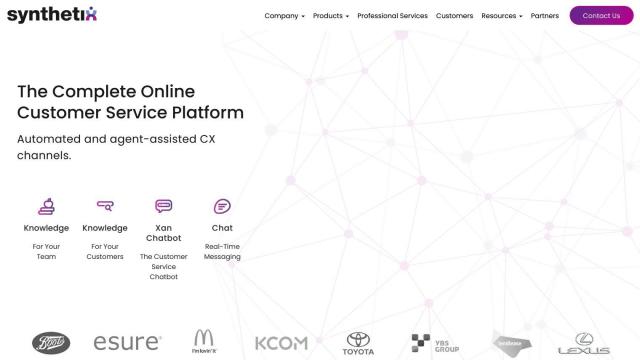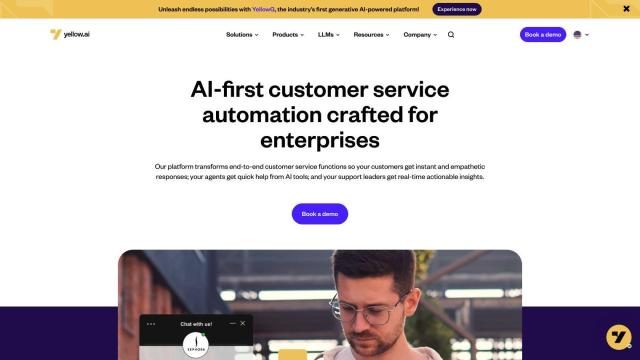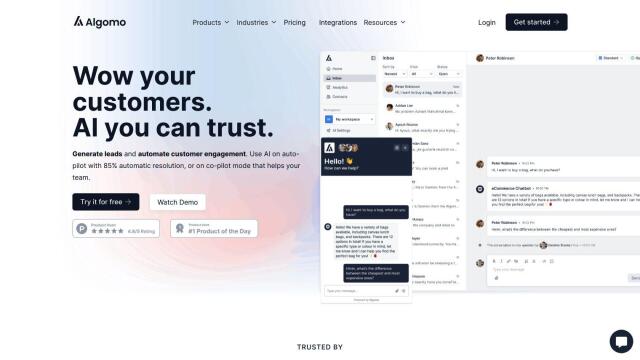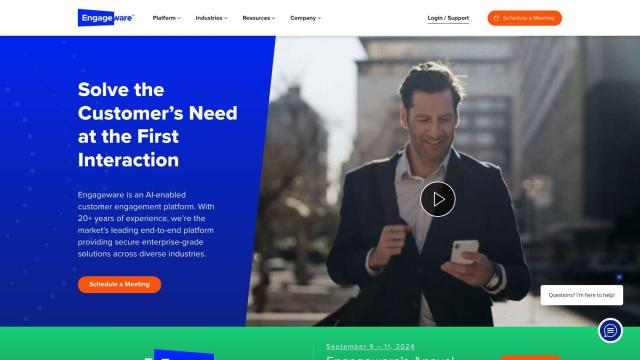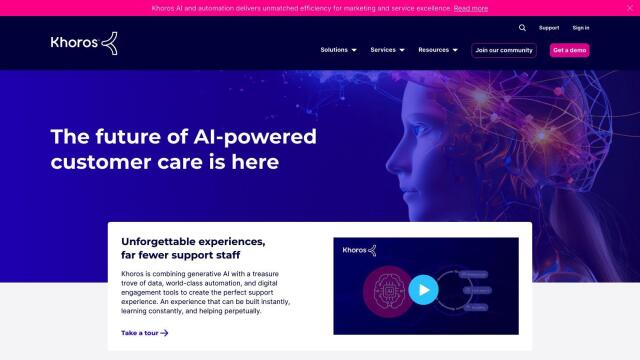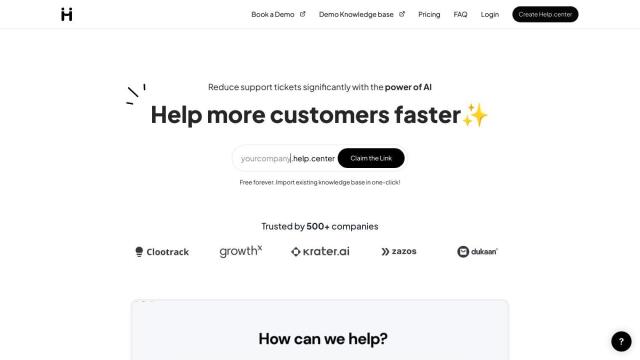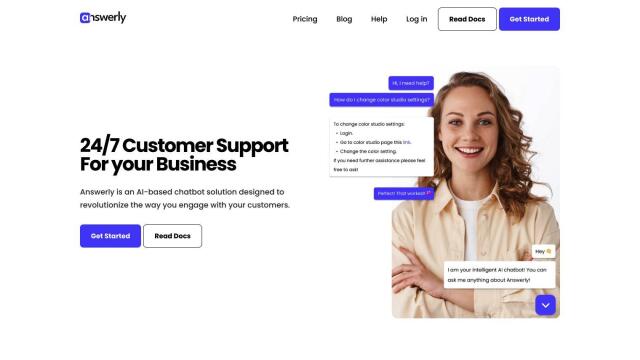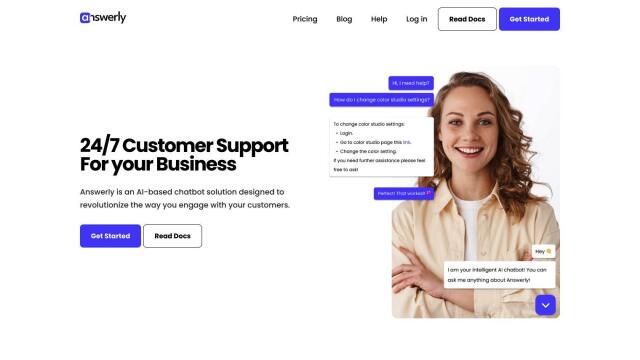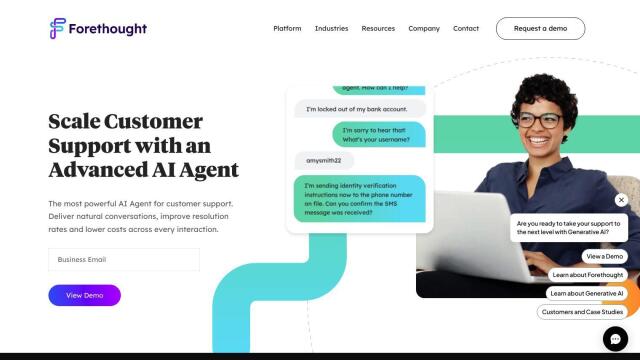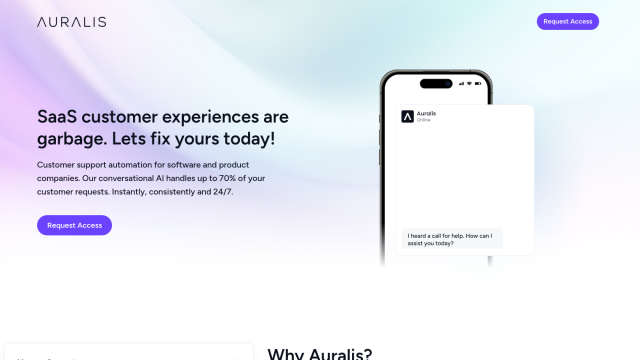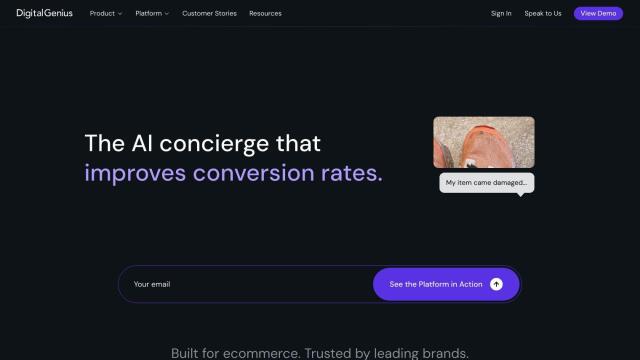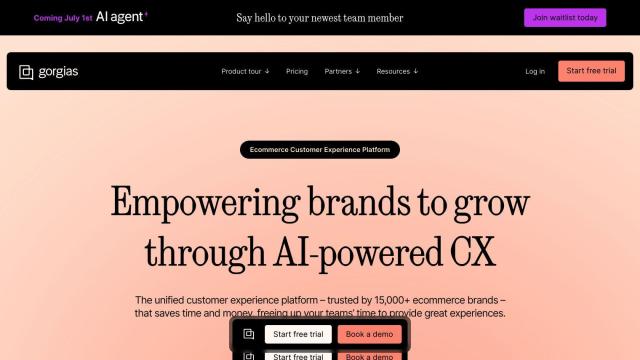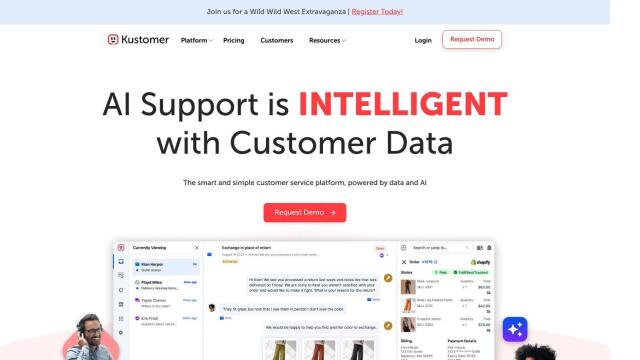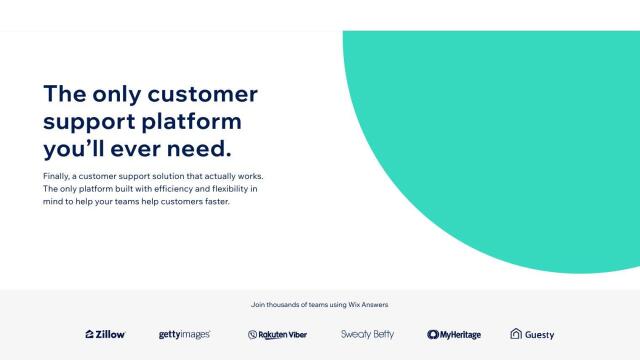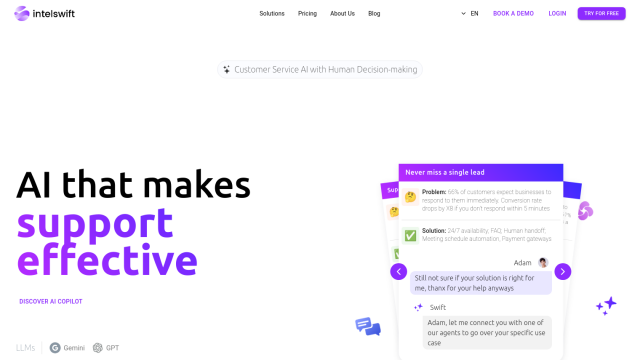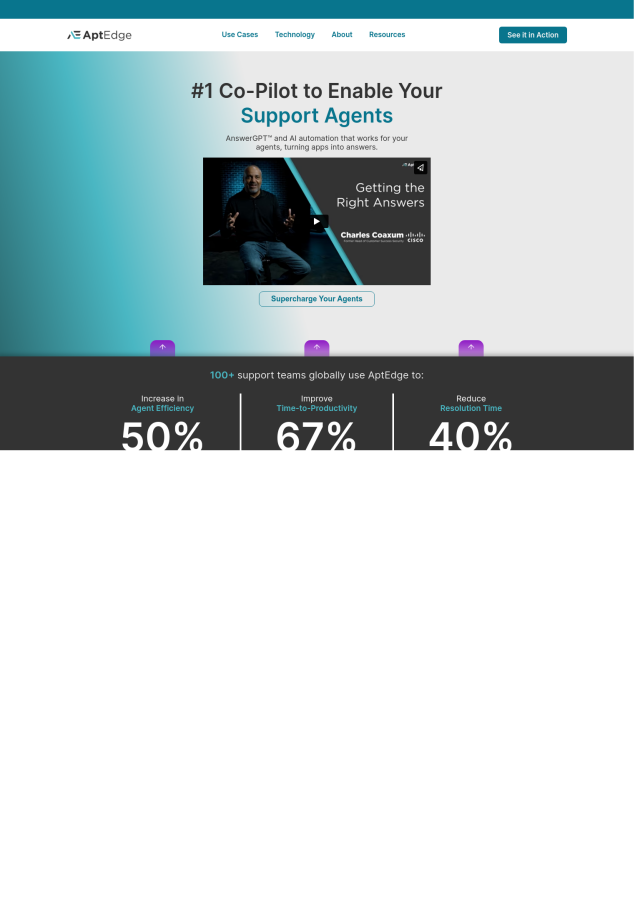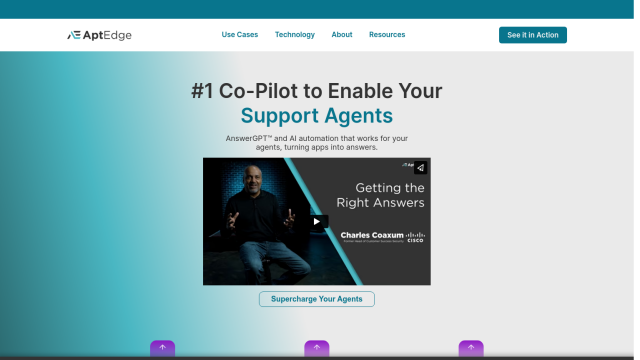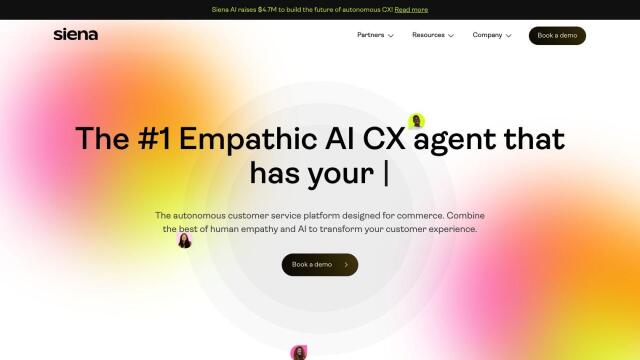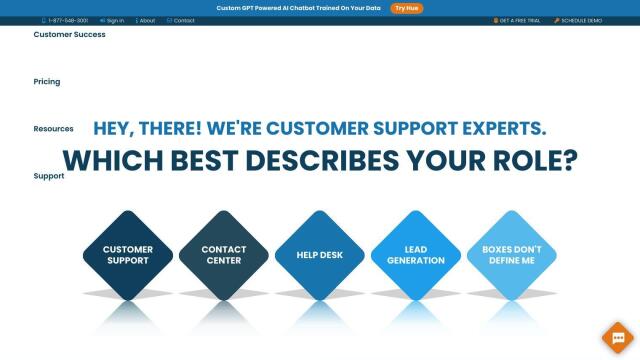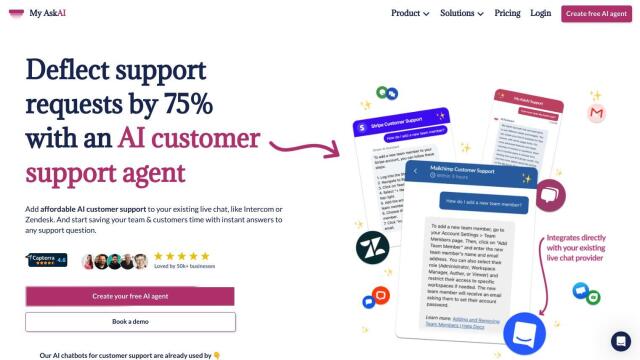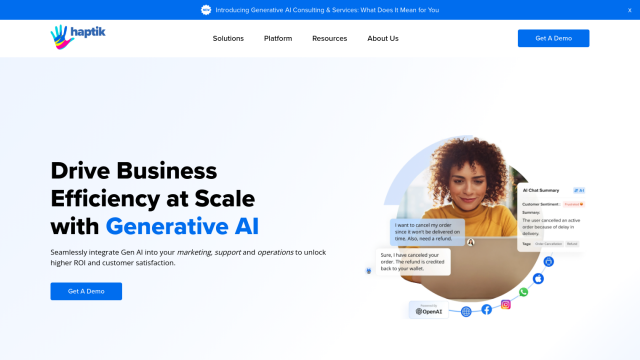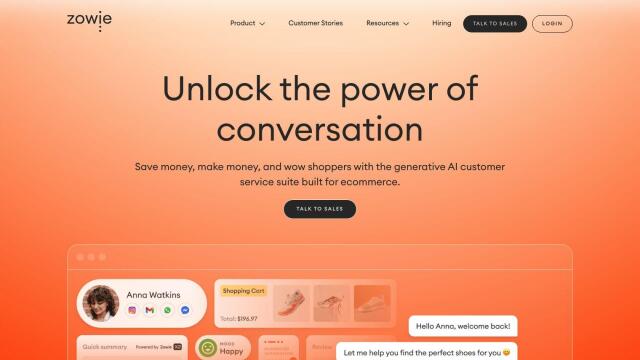
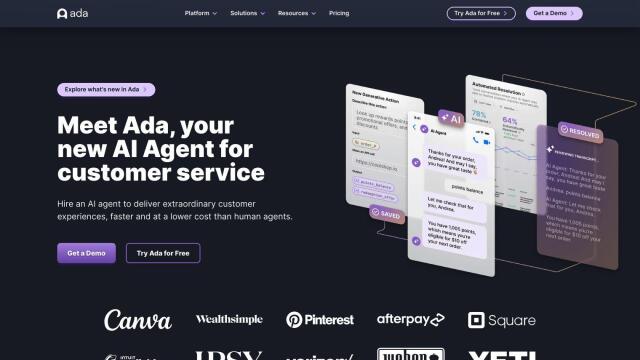
Ada
If you're looking for another Synthetix alternative, Ada is also worth considering. Ada is an AI-powered customer service automation platform that replaces traditional scripted chatbots. It includes features like voice and email automation, support for multiple languages, automated resolution measurement, and AI coaching. Businesses can integrate Ada with existing knowledge bases and data from other business systems to personalize the response. The platform has shown strong results, including a 2x increase in automated resolution rate and $2.7 million in annual savings.

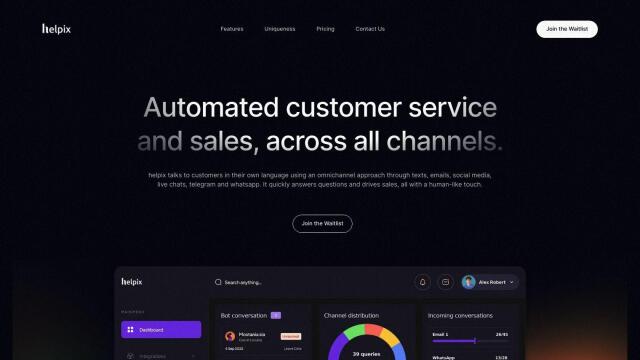
helpix
Another option is helpix. helpix is an intelligent, automated customer service platform that uses AI to respond immediately to customer inquiries across multiple communication channels. It combines multiple sources of information to train its AI and generate answers. Key features include seamless integration of knowledge bases, omnichannel communication, and advanced NLU for human-sounding answers. helpix offers different pricing tiers to suit different business needs, with the goal of improving customer interactions and automating customer service.


boost.ai
If you're looking for a more powerful conversational AI solution, take a look at boost.ai. The platform uses AI chat and voice bots to offer personalized interactions and handle high traffic volumes while keeping costs low. It offers scalability and security through easy integration with existing systems, generative AI for creative answers, and 24/7 coverage. boost.ai is designed to increase self-service rates across channels and supports integrations with authentication, business applications, and CX solutions.

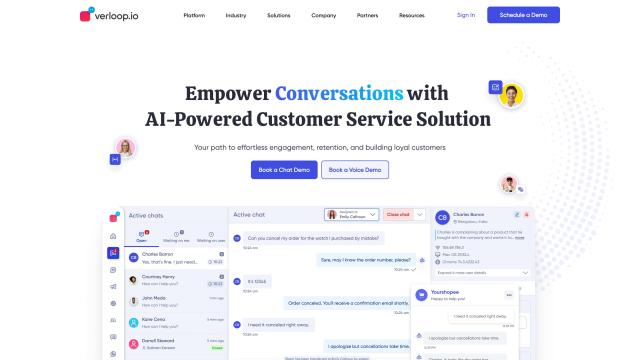
Verloop
Last but not least, Verloop is another good alternative. Verloop.io is a conversational AI platform that automates chat and voice interactions, empowers agents, and delights customers. It includes automated chat and voice support, agent empowerment tools, and a suite of integrations for unified platform support. With its Generative AI capabilities, Verloop.io allows businesses to deflect a large percentage of support requests, resulting in higher customer satisfaction and lower operational costs.

